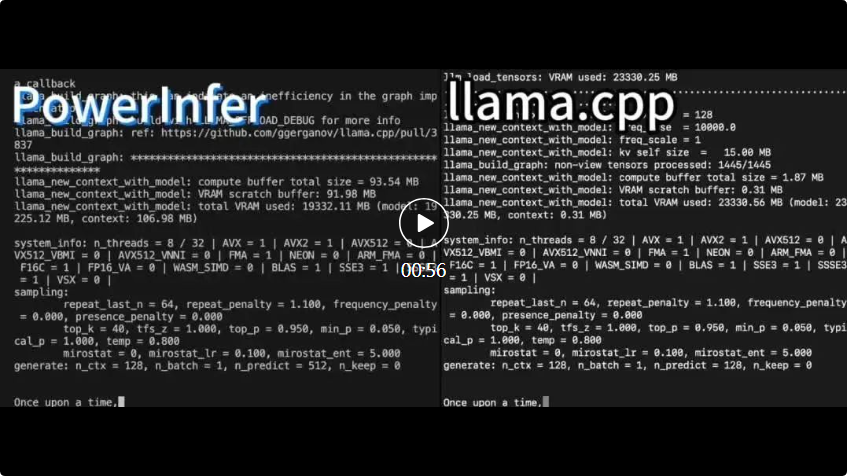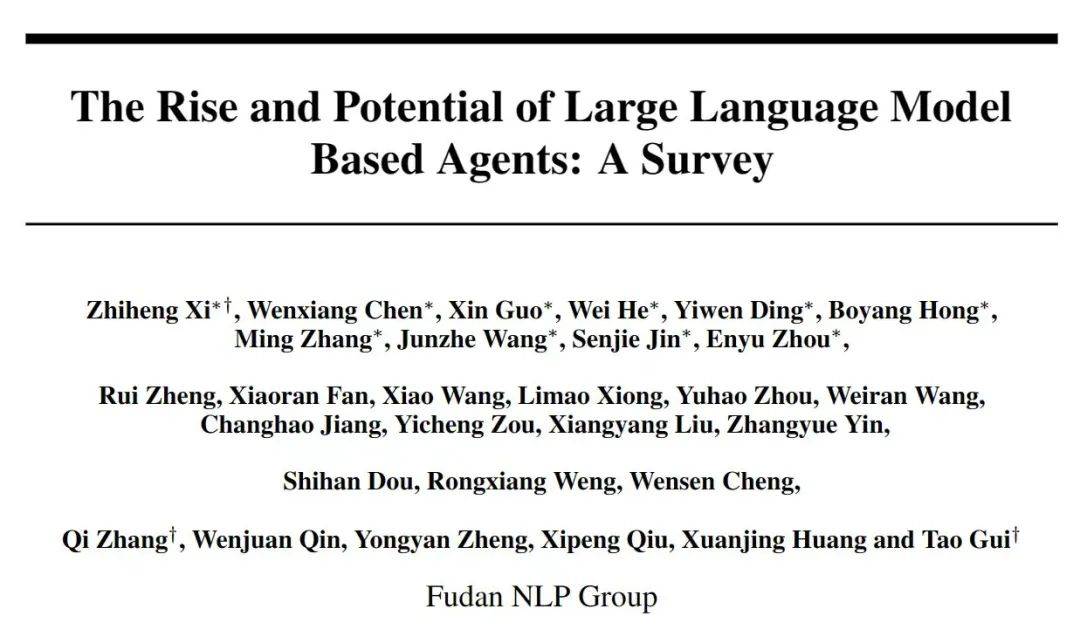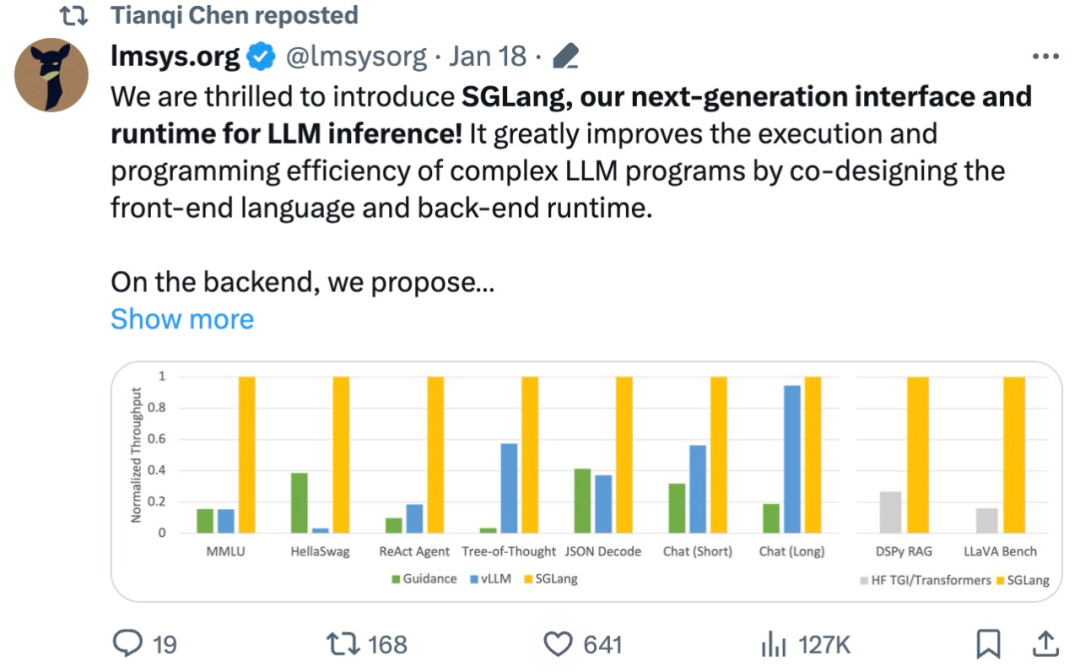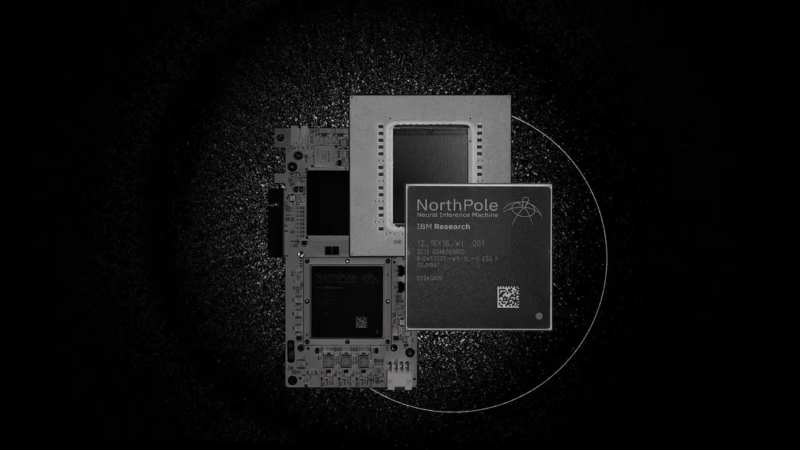 Technology peripherals
Technology peripherals AI
AI Nature sub-journal | Based on endogenous complexity, the Institute of Automation's new brain-like network builds a bridge between artificial intelligence and neuroscience
Nature sub-journal | Based on endogenous complexity, the Institute of Automation's new brain-like network builds a bridge between artificial intelligence and neuroscience
The AIxiv column is a column where this site publishes academic and technical content. In the past few years, the AIxiv column of this site has received more than 2,000 reports, covering top laboratories from major universities and companies around the world, effectively promoting academic exchanges and dissemination. If you have excellent work that you want to share, please feel free to contribute or contact us for reporting. Submission email: liyazhou@jiqizhixin.com; zhaoyunfeng@jiqizhixin.com
This work was published in "Nature Computational Science". The co-corresponding authors are researchers Li Guoqi and Xu Bo from the Institute of Automation, Chinese Academy of Sciences, and Professor Tian Yonghong from Peking University. . The co-authors are He Linxuan, an undergraduate student in Qian Xuesen's class at Tsinghua University (an intern at the Institute of Automation), Xu Yunhui, an undergraduate student in the basic mathematics and science class (an intern at the Institute of Automation), and He Weihua and Lin Yihan, doctoral students in the Department of Precision Instruments at Tsinghua University.
Enabling models with broader and more general cognitive capabilities is an important goal in the current development of the field of artificial intelligence (AI). The currently popular large model path is based on Scaling Law to build larger, deeper and wider neural networks to improve model performance, which can be called a general intelligence implementation method "based on exogenous complexity". However, this path also faces some insurmountable difficulties, such as high computational resource consumption and energy consumption, and has shortcomings in interpretability.
Artificial intelligence and neuroscience have long been interdependent and developed collaboratively. In order to overcome the dilemma of realizing general intelligence "based on exogenous complexity", the research team of Li Guoqi and Xu Bo from the Institute of Automation, Chinese Academy of Sciences, together with Tsinghua University, Peking University and others, drew on the complex dynamic characteristics of brain neurons and proposed "based on endogenous complexity". "The brain-like neuron model construction method (Figure 1) improves the computing resource consumption problem caused by the outward expansion of traditional models and provides an example of the effective use of neuroscience to develop artificial intelligence. The journal Nature Computational Science commented on this: "AI research is closer to engineering and applications, while neuroscience research is more exploratory. The research team challenged this traditional view and showed that more detailed and biologically realistic neurons Models can drive greater progress in deep learning ”

Paper link: https://www.nature.com/articles/s43588-024-00674-9
Comment link: https:// /www.nature.com/articles/s43588-024-00677-6

Endogenous complexity refers to internally drawing on the complex dynamic characteristics of brain neurons to construct a neural network primitive model
a small network model with endogenous complexity: inspiration from biological neurons
Biological neurons have complex Internal structures, such as ion channels, synaptic transmission mechanisms, etc., these complex internal structures enable neurons to process complex signals and generate diverse responses. In contrast, current artificial spiking neural network models, such as the classic LIF (Leaky Integrate and Fire) network, usually adopt simple internal structures and are difficult to simulate the complex dynamics and functions of biological neurons.
In this study, the researchers proposed the concept of "small network model with endogenous complexity". The core idea is to introduce complex internal structures into single neurons by simulating the complex dynamics of biological neurons. , thereby building a more efficient AI model. For example, in this study, the researchers used the HH (Hodgkin-Huxley) model in the spiking neural network to replace the traditional LIF model. As a mathematical model that describes the mechanism of neuron action potential generation, the HH model has fine dynamics brought about by complex internal structures and can simulate the response of neurons to various stimuli.
Transformation from exogenous complexity to endogenous complexity
Theoretical dynamics derivation and simulation
研究團隊透過理論證明了HH 模型與LIF 模型在動作電位產生機制上存在某種等效關係,即一個HH 神經元可以和四個時變參數LIF 神經元(tv-LIF)以特定連接方式形成的微結構等效,其中每個LIF 神經元描述HH 模型中的一個離子通道。基於這種等效性,可以透過設計微結構提升計算單元的內生複雜性,使HH 網路模型能夠模擬更大規模LIF 網路模型的動力學特性,在更小的網路結構上實現與之相似的計算功能。
研究團隊透過模擬神經元刺激輸入對比網路輸出對該理論進行了模擬驗證。在相同的輸入刺激下,具有較高外生複雜性的 tv-LIF 網路能夠與 HH 模型產生相同的輸出反應。進一步,團隊將四個tv-LIF 神經元建構的「HH 模型」(tv-LIF2HH)簡化為s-LIF2HH 模型,透過模擬實驗驗證了這種簡化模型仍然保留捕捉HH 模型動力學行為的可能性(圖2)。

對上生長時保持複雜性的複雜性行為 保持複雜性動力行為
網路學習實驗對比
除了透過模擬研究相同刺激下不同網路的動力學行為,研究者建構了更大規模的HH 網路模型, s-LIF2HH 網路模型,並進行了多任務分類和深度強化學習實驗。結果表明,具有內生複雜性HH 網路模型能夠與更大規模的s-LIF2HH 網路模型在表示能力和穩健性上具有相似的性能,相比更大規模的一般LIF 網路表現出更好的性能。
多任務學習實驗:研究者透過使用Fashion-MNIST 資料集進行多任務學習實驗,結果顯示HH 網路模型能夠與更大規模的s-LIF2HH 網路模型實現相當效能,甚至略優於更大規模的一般LIF 網路(圖3)。

圖3. 內生複雜性的HH 網路模型在多重任務上能與更大規模外生複雜性網路絡性能相當
時序強化學習實驗:研究者在倒立擺(Inverted Pendulum)和倒立雙擺(Inverted Double Pendulum)環境下進行時序強化學習實驗,結果顯示HH 網路模型能夠與更大規模的LIF 網路模型相比,表現出更強的時序資訊擷取能力(圖4)。

性能相當
魯棒性實驗:研究者在多任務學習和深度強化學習任務中加入高斯噪聲,以評估網路的穩健性。實驗結果顯示,更大規模的一般 LIF 網路模型在噪音影響下效能下降幅度最大,而 HH 網路模型和更大規模的 s-LIF2HH 網路模型則表現出更強的穩健性。在噪音強度增加的情況下,HH 網路模型和 s-LIF2HH 網路模型的獎勵曲線仍然保持接近,並且相比一般 LIF 網路模型受到的影響顯著地更小(圖 5)。

實驗證明了內生複雜性模型在處理複雜任務時的有效性和可靠性。同時,研究發現 HH 網路模型在計算資源消耗上更為高效,顯著減少了記憶體和計算時間的使用,從而提高了整體的運算效率。研究團隊透過資訊瓶頸理論對上述研究結果進行了解釋。除此之外,小規模的模型外部結構相對簡單,更容易理解其決策過程,也提高了模型的可解釋性和安全性。
結語與展望
具有內生複雜性的小型模型為 AI 的發展帶來了新的機遇。透過模擬生物神經元的複雜動力學,優化模型的局部微結構擴展內生複雜性,我們可以建立更有效率、更強大的 AI 模型,並克服外部複雜性大型模型的困境。未來,拓展內生複雜性或將成為 AI 研究的重要方向,並推動 AI 技術走向更廣泛的應用。
本研究為將神經科學的複雜動力學特性融入人工智慧提供了新的方法和理論支持,為實際應用中的 AI 模型優化和性能提升提供了可行的解決方案。目前,研究團隊已進行對更大規模HH 網絡,以及具備更大內生複雜性的多分枝多房室神經元的研究,有望進一步提升大模型計算效率與任務處理能力,實現在實際應用場景中的快速落地。
The above is the detailed content of Nature sub-journal | Based on endogenous complexity, the Institute of Automation's new brain-like network builds a bridge between artificial intelligence and neuroscience. For more information, please follow other related articles on the PHP Chinese website!
 4090生成器:与A100平台相比,token生成速度仅低于18%,上交推理引擎赢得热议Dec 21, 2023 pm 03:25 PM
4090生成器:与A100平台相比,token生成速度仅低于18%,上交推理引擎赢得热议Dec 21, 2023 pm 03:25 PMPowerInfer提高了在消费级硬件上运行AI的效率上海交大团队最新推出了超强CPU/GPULLM高速推理引擎PowerInfer。PowerInfer和llama.cpp都在相同的硬件上运行,并充分利用了RTX4090上的VRAM。这个推理引擎速度有多快?在单个NVIDIARTX4090GPU上运行LLM,PowerInfer的平均token生成速率为13.20tokens/s,峰值为29.08tokens/s,仅比顶级服务器A100GPU低18%,可适用于各种LLM。PowerInfer与
 思维链CoT进化成思维图GoT,比思维树更优秀的提示工程技术诞生了Sep 05, 2023 pm 05:53 PM
思维链CoT进化成思维图GoT,比思维树更优秀的提示工程技术诞生了Sep 05, 2023 pm 05:53 PM要让大型语言模型(LLM)充分发挥其能力,有效的prompt设计方案是必不可少的,为此甚至出现了promptengineering(提示工程)这一新兴领域。在各种prompt设计方案中,思维链(CoT)凭借其强大的推理能力吸引了许多研究者和用户的眼球,基于其改进的CoT-SC以及更进一步的思维树(ToT)也收获了大量关注。近日,苏黎世联邦理工学院、Cledar和华沙理工大学的一个研究团队提出了更进一步的想法:思维图(GoT)。让思维从链到树到图,为LLM构建推理过程的能力不断得到提升,研究者也通
 复旦NLP团队发布80页大模型Agent综述,一文纵览AI智能体的现状与未来Sep 23, 2023 am 09:01 AM
复旦NLP团队发布80页大模型Agent综述,一文纵览AI智能体的现状与未来Sep 23, 2023 am 09:01 AM近期,复旦大学自然语言处理团队(FudanNLP)推出LLM-basedAgents综述论文,全文长达86页,共有600余篇参考文献!作者们从AIAgent的历史出发,全面梳理了基于大型语言模型的智能代理现状,包括:LLM-basedAgent的背景、构成、应用场景、以及备受关注的代理社会。同时,作者们探讨了Agent相关的前瞻开放问题,对于相关领域的未来发展趋势具有重要价值。论文链接:https://arxiv.org/pdf/2309.07864.pdfLLM-basedAgent论文列表:
 吞吐量提升5倍,联合设计后端系统和前端语言的LLM接口来了Mar 01, 2024 pm 10:55 PM
吞吐量提升5倍,联合设计后端系统和前端语言的LLM接口来了Mar 01, 2024 pm 10:55 PM大型语言模型(LLM)被广泛应用于需要多个链式生成调用、高级提示技术、控制流以及与外部环境交互的复杂任务。尽管如此,目前用于编程和执行这些应用程序的高效系统却存在明显的不足之处。研究人员最近提出了一种新的结构化生成语言(StructuredGenerationLanguage),称为SGLang,旨在改进与LLM的交互性。通过整合后端运行时系统和前端语言的设计,SGLang使得LLM的性能更高、更易控制。这项研究也获得了机器学习领域的知名学者、CMU助理教授陈天奇的转发。总的来说,SGLang的
 大模型也有小偷?为保护你的参数,上交大给大模型制作「人类可读指纹」Feb 02, 2024 pm 09:33 PM
大模型也有小偷?为保护你的参数,上交大给大模型制作「人类可读指纹」Feb 02, 2024 pm 09:33 PM将不同的基模型象征为不同品种的狗,其中相同的「狗形指纹」表明它们源自同一个基模型。大模型的预训练需要耗费大量的计算资源和数据,因此预训练模型的参数成为各大机构重点保护的核心竞争力和资产。然而,与传统软件知识产权保护不同,对预训练模型参数盗用的判断存在以下两个新问题:1)预训练模型的参数,尤其是千亿级别模型的参数,通常不会开源。预训练模型的输出和参数会受到后续处理步骤(如SFT、RLHF、continuepretraining等)的影响,这使得判断一个模型是否基于另一个现有模型微调得来变得困难。无
 FATE 2.0发布:实现异构联邦学习系统互联Jan 16, 2024 am 11:48 AM
FATE 2.0发布:实现异构联邦学习系统互联Jan 16, 2024 am 11:48 AMFATE2.0全面升级,推动隐私计算联邦学习规模化应用FATE开源平台宣布发布FATE2.0版本,作为全球领先的联邦学习工业级开源框架。此次更新实现了联邦异构系统之间的互联互通,持续增强了隐私计算平台的互联互通能力。这一进展进一步推动了联邦学习与隐私计算规模化应用的发展。FATE2.0以全面互通为设计理念,采用开源方式对应用层、调度、通信、异构计算(算法)四个层面进行改造,实现了系统与系统、系统与算法、算法与算法之间异构互通的能力。FATE2.0的设计兼容了北京金融科技产业联盟的《金融业隐私计算
 220亿晶体管,IBM机器学习专用处理器NorthPole,能效25倍提升Oct 23, 2023 pm 03:13 PM
220亿晶体管,IBM机器学习专用处理器NorthPole,能效25倍提升Oct 23, 2023 pm 03:13 PMIBM再度发力。随着AI系统的飞速发展,其能源需求也在不断增加。训练新系统需要大量的数据集和处理器时间,因此能耗极高。在某些情况下,执行一些训练好的系统,智能手机就能轻松胜任。但是,执行的次数太多,能耗也会增加。幸运的是,有很多方法可以降低后者的能耗。IBM和英特尔已经试验过模仿实际神经元行为设计的处理器。IBM还测试了在相变存储器中执行神经网络计算,以避免重复访问RAM。现在,IBM又推出了另一种方法。该公司的新型NorthPole处理器综合了上述方法的一些理念,并将其与一种非常精简的计算运行
 制作莫比乌斯环,最少需要多长纸带?50年来的谜题被解开了Oct 07, 2023 pm 06:17 PM
制作莫比乌斯环,最少需要多长纸带?50年来的谜题被解开了Oct 07, 2023 pm 06:17 PM自己动手做过莫比乌斯带吗?莫比乌斯带是一种奇特的数学结构。要构造一个这样美丽的单面曲面其实非常简单,即使是小孩子也可以轻松完成。你只需要取一张纸带,扭曲一次,然后将两端粘在一起。然而,这样容易制作的莫比乌斯带却有着复杂的性质,长期吸引着数学家们的兴趣。最近,研究人员一直被一个看似简单的问题困扰着,那就是关于制作莫比乌斯带所需纸带的最短长度?布朗大学RichardEvanSchwartz谈到,对于莫比乌斯带来说,这个问题没有解决,因为它们是「嵌入的」而不是「浸入的」,这意味着它们不会相互渗透或自我


Hot AI Tools

Undresser.AI Undress
AI-powered app for creating realistic nude photos

AI Clothes Remover
Online AI tool for removing clothes from photos.

Undress AI Tool
Undress images for free

Clothoff.io
AI clothes remover

AI Hentai Generator
Generate AI Hentai for free.

Hot Article

Hot Tools

SublimeText3 Chinese version
Chinese version, very easy to use

DVWA
Damn Vulnerable Web App (DVWA) is a PHP/MySQL web application that is very vulnerable. Its main goals are to be an aid for security professionals to test their skills and tools in a legal environment, to help web developers better understand the process of securing web applications, and to help teachers/students teach/learn in a classroom environment Web application security. The goal of DVWA is to practice some of the most common web vulnerabilities through a simple and straightforward interface, with varying degrees of difficulty. Please note that this software

VSCode Windows 64-bit Download
A free and powerful IDE editor launched by Microsoft

SublimeText3 English version
Recommended: Win version, supports code prompts!

SAP NetWeaver Server Adapter for Eclipse
Integrate Eclipse with SAP NetWeaver application server.




